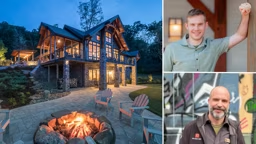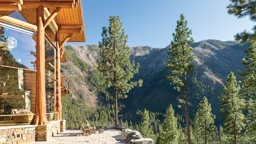
A big draw to custom home building is the freedom to build on any parcel of land you deem worthy of your dream house. In fact, the location is oftentimes just as big a factor in your home’s overall look and feel as the design itself. If you don’t already own your land, there are some fundamental considerations you’ll want to think about before making your final decision.
Remember: The land you choose to build on can have a tremendous impact on the building process and the costs, so good planning at this stage is an important pre-construction activity.

Location First
The location of your home will affect everything, from the cost of the land to the homeowners insurance to the eventual resale value of the home. Once you’ve narrowed down your search to a few potential sites, think about these things before signing on the dotted line.
Land Considerations.
Whether you’re hoping for a majestic view of the Grand Tetons or a wide-open Midwestern prairie, you need to know the lay of the land to plan your home right. Is the terrain suitable for the style of home you want? A site map will explain the traits, benefits and challenges of your proposed building site. If the land is undeveloped, you may also need a topographical survey. Your township or county zoning office can supply you with information about easements, utilities and environmental considerations. The natural features of the landscape, along with the location of utilities, should be indicated on the site map.
Distance to Amenities.
Most people like the idea of a remote location for their timber home, but think carefully about things like distance to work, school, stores and healthcare before making a decision. Also, homes that are too far from fire protection will pay more for fire insurance — a common complaint from homeowners who have built an expensive home far from adequate fire protection.
Planning for Water.
One major component that will make or break your future home site is whether or not the property can pass a “perc test.” A perc test indicates the soil’s capability to absorb liquid over a specific period of time and determines the size and type of septic system you’ll need. If it doesn’t pass, you may not be able to build on it or a more expensive system to handle waste treatment will have to be installed.. You’ll also need a source of potable (drinkable) water. In rural areas, this typically means drilling a well. If you’re building closer to developed areas and are lucky enough to tap into public utilities, you can bypass these steps.
Buying Land
Comparing the cost of land can be difficult because of many intangible considerations. Land that is inexpensive up front may require additional money to make it livable. For example, if a parcel of land fails to percolate properly and has no city or public water supply, building a waste treatment system and digging a well can quickly add several thousand dollars to the price. Under some circumstances, building on a piece of land that is too large or too expensive can be difficult to finance.
Most residential mortgage brokers will not finance the purchase of raw land, and they may not finance a home when value of the land is more than 33 percent of the total value of the project. Other financing sources will not work with land of more than one acre, so be sure to coordinate with your financing source the size and cost of the property on which you are planning to build.











